Looking Up, 16-page English PDF Edition, Back Issues and Current Issue
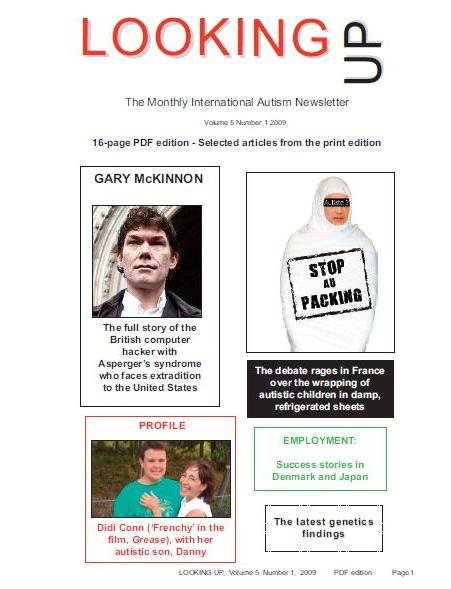
|
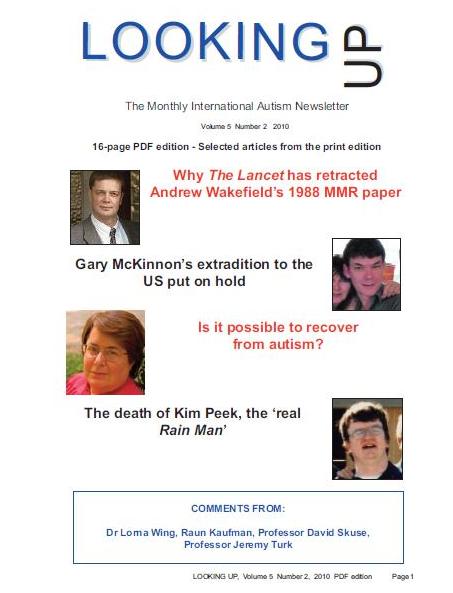
|
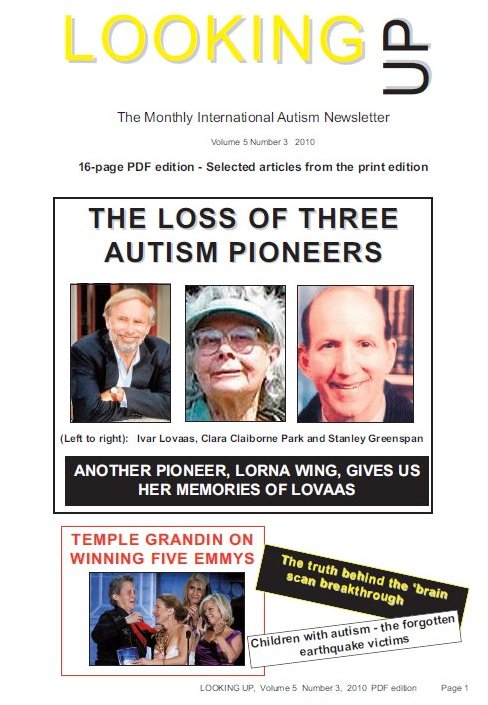
|
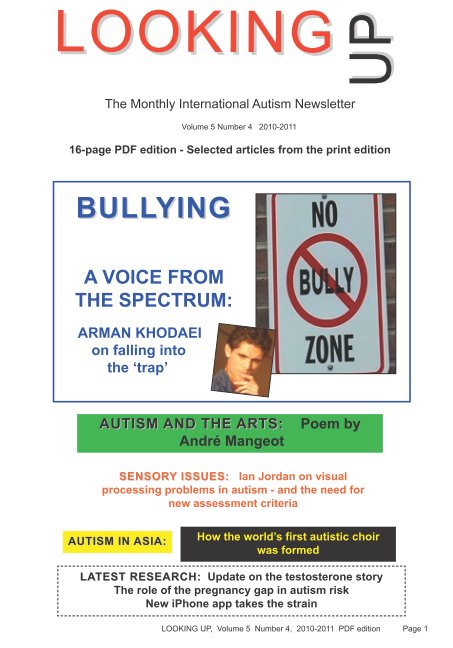
|
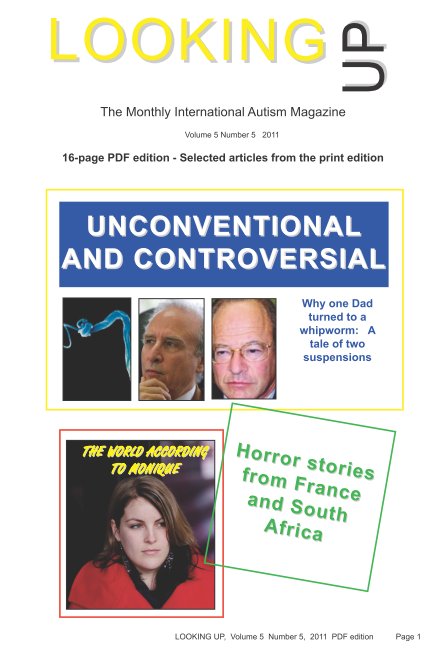
|
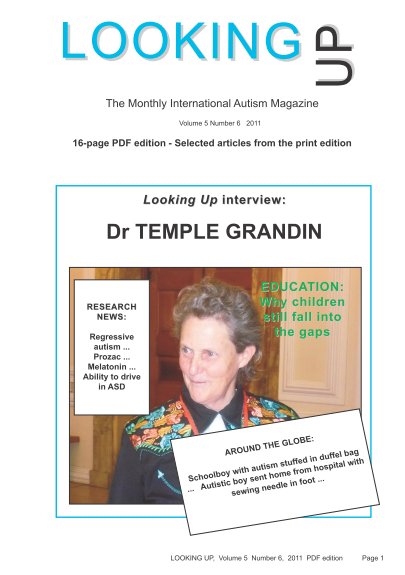
|
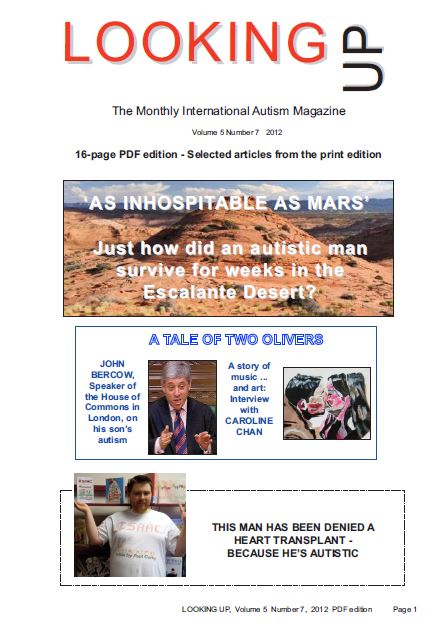
|
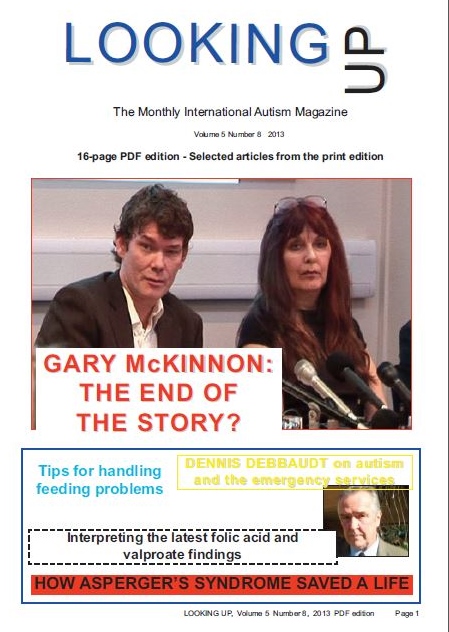
|
| Home page | Subscribe (print edition) | Selected articles | Our publications | Our mailing lists |
| PDF edition | Subscribe (PDF edition) | Back issue contents | Autism books | Contact us |
By ADAM FEINSTEIN
From Volume 3 Number 12
Professor
CHRISTOPHER GILLBERG, formerly of the University of Gothenburg in
Sweden and St
George's Hospital, London, UK, and co-author, with Mary Coleman, of the
book The Biology of the Autistic Syndromes,
spoke to Adam Feinstein, Editor of Looking Up
ADAM FEINSTEIN: How close do you believe we are to being able to intermesh the neurological, genetic and environmental studies into a bigger research project which will allow us to determine at least one of the causes of autism?
CHRISTOPHER GILLBERG: I think we still have some way to go, because the emerging evidence, both from the neuro-biological and neuro-psychological and epidemiological studies is somewhat contradictory, so we are not yet able to see which way we should be heading. I think it would be very difficult to set up the research project at this time. Currently, people are looking at small sub-groups of people with autism in various areas. That is going to be very important, as long as people also do the bigger-picture studies, the epidemiological ones. But I do believe that we have come to the stage where some of the causes of autism will be revealed within the next few years, I don't believe that the majority of cases will be explained in that timespan. It will be one case here and another there. The bigger picture will emerge only after we add up all the smaller studies.
AF: On the neurological aspects of autism, how significant do you think the findings of Eric Courchesne (brain overgrowth) and Manuel Casanova (mini-columns) will prove? Courchesne told me in Melbourne that if his study were to be replicated, there might be a case for early diagnosis as simple as a tape-measure around a child's head.
CG: Actually, I don't think we are anywhere near that. All the studies are agreed that it is only a minority sub-group of people with autism who have big heads, so merely measuring the head would not identify the majority of people with autism. But I do think that Courchesne and some of the other people in the field are on to something major in their studies of head-growth in autism.
AF: You have said that in many cases of autism, we are looking at a "variant" brain, not a "damaged" brain. Could you explain what you mean by that?
CG: In the past, we were always talking about brain damage, and brain dysfunction, and people thought that genes were either there and doing their job perfectly or were mutant and so knocked out completely, and were not doing anything towards the production of a particular protein, for example. Now we know more about genes being down-regulated. We know that some people have a particular gene operating but it does not produce the same amount of the protein - it could be 10, 15 or 20 per cent. That is why I refer to variant genes, rather than mutant genes.
AF: On the question of prevalence, you are working on a fascinating study of autism in the Faroe Islands. Could you tell me a little more about this study?
CG: A couple of years ago, we started thinking about doing an autism study among so-called genetic islanders, where you would not have to deal with hundreds of thousands of genes in searching for individual genes for autism. So we chose the Faroe Islands, where the population has been stable for several hundred years. The population is only about 50,000. We found that the rate of autism there was very similar to that reported in the rest of the world: about 0.6 per cent of schoolchildren were autistic. On the one hand, this may seem like quite a surprising finding: you might expect to find extremely low prevalence since there are so few autism genes in the Faroe Islands or a much higher prevalence since the inbreeding might increase the number of genetic conditions. But maybe the two opposite directions lead to the prevalence rate we see elsewhere. This is only the first step, in any case. The next stage is to link all these families with one another.
AF: I believe you found one island with just a single child inhabitant - and he was autistic!
CG: That's right.
AF: You always insist that there has not been a genuine increase in autism. Could you explain why?
CG: I don't believe there has been a major increase in the prevalence of autism. One of the reasons for this is that a study we did in the 1970s which was published in the early 1980s found major autistic features in 0.7 per cent of the general population of school-age children. This is exactly the same figure that people are now reporting for autistic spectrum disorder. Nor do epidemiological studies support the idea of a huge increase. That is not to say, though, that there could not be an increase in some sub-groups. There has been a decrease in other sub-groups: rubella, or German measles, was once a cause of autism. It is no longer a major cause today in the Western world.
But look at prematurity, which can probably lead to autism in some cases. What is happening is that far more children are surviving premature births today, so you could expect some increase in autism from that. But by and large, I would be surprised if there were an enormous increase in cases of autism.
AF: In the past, you have mentioned your hypothesis about immigrants. Could you explain this?
CG: We and others noticed 25 years ago that, if you had a population of children with autism, there was a high rate of immigrant parents, usually mothers, among this population. We wondered what the reason could be for this. Could it be that the mothers were not immune to viral infections? More recently, we have been more impressed by the finding that fathers with autism spectrum disorders are unable to find a woman in their own culture with whom to have a child and they may travel to a distant part of the globe and find someone there. They may well return to England or Sweden or wherever and have a child, and the mother may well be classified as an immigrant, whereas the reason for the child's autism could be the father's autistic spectrum disorder.
AF: On the question of language, why are there not more studies on those autistic children, like my son, who started to talk and then lost all their speech? I am increasingly convinced that the kind of language these children use before they lose it is generally asocial.
CG: There is clearly, and always has been, a group of children who seem to be developing some language and then they plateau and some regress. But I do think it is important to understand that in normal language development, what happens is that children do learn to speak by repeating what other people say. They have phases of echolalia. The difference is that this repetitious use of single words will very soon be replaced, in normal children, by the use of words for social communication. That does not happen with the majority of cases with autism. What happens is, that even if an autistic child has the words, he cannot use them for a social purpose and that is why, I believe, he stops saying them. If you are trained to play the piano and you stop playing, you lose those skills. In autism, this would be perceived as regression when, in actual fact, the words could still be there but the child is not using them. Sometimes, people are surprised years down the line when a non-verbal child starts saying something.
AF: I think my son may have hyperlexia: he could read the letters on street signs earlier than his two "neurotypypical" elder sisters could. A French autism authority called Denys Ribas believes that children with autism may be using these hyperlexic skills deliberately to avoid social contact. Does that seem far-fetched to you?
CG: Yes, it does seem far-fetched. I don't think young children with autism deliberately choose to avoid contact. Maybe later on they will, because they have seen that is so difficult or anxiety-provoking.
AF: I think your use of the terminology of "high-functioning individuals with autism" is very useful when it comes to attempting to distinguish between people with what is often referred to as high-functioning autism and Asperger's syndrome. I was very struck by something you said at dinner last night: namely, that you found it easier to talk to Ros Blackburn, an enormously high-functioning woman with autism, than to someone with Asperger's.
CG: Yes. I think there is a mistake in the notion that so-called high-functioning autism is mild autism. There is another mistake, when people with Asperger's syndrome are referred to as mildly affected and therefore more sociable. My experience runs counter to that notion: I have found that most people with Asperger's have as severe or more severe autism than people with severe or more severe autism than people with so-called low-functioning autism. I believe you can have severe mental retardation and mild autism. Whereas in high-functioning cases, such as in Asperger's syndrome, it is the autism which is severe. They are rightly perceived as high-functioning individuals, but some people I know with low- and middle-functioning autism are more empathetic than people with Asperger's syndrome.
AF: A recent study by Pat Howlin at St George's Hospital [in London] showed that people with Asperger's do have considerable language abnormalities, contrary to what is usually believed.
CG: Of course, they often have excellent imitative language skills, and can be excellent speakers. But actually, when it comes to using language in an exchange of views, they are as impaired as low-functioning children.
AF: Here in the UK, a child or adult with a diagnosis of Asperger's tends to have less services coming his way.
CG: Yes, that is the case. Anyone who diagnoses Asperger's must include in his or her report that Asperger's is one of the variants of autism.
AF: We know that the causes of autism are largely genetic. But twin studies indicate that there must also be an environmental element in some cases. What do you think this element could be? Could mercury poisoning be a possibility? We know, after all, that a condition like Wilson's disease is brought about by copper excess.
CG: Quite a number of environmental toxins could contribute to autism or could trigger autism in someone genetically vulnerable. I think it is entirely possible that a high-functioning person would have had autistic features if he had been exposed in utero or after birth to an environmental toxin, I think it is theoretically possible that a person could be pushed over the edge into more severe variants, including classic manifestations of autism. I do not think that there is as yet good evidence for any specific toxin. There is evidence for thalidomide or a number of other drugs contributing to autism. I could not put mercury top of the list on the basis of the research. But it is not impossible.

|

|

|

|

|

|

|

|
| Current 40-page print edition issue | |||||||||||||||
|---|---|---|---|---|---|---|---|---|---|---|---|---|---|---|---|
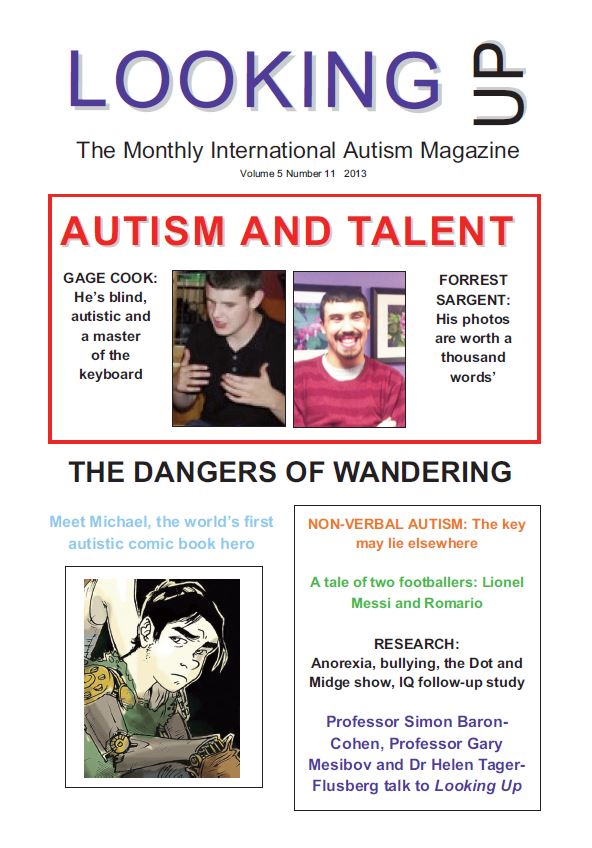
|
| ||||||||||||||
| PRINT EDITION BACK ISSUE CONTENTS AND FRONT COVERS | ||||||||||||||||||||||||||
|---|---|---|---|---|---|---|---|---|---|---|---|---|---|---|---|---|---|---|---|---|---|---|---|---|---|---|
| VOLUME 1, Number: | 1 | 2 | 3 | 4 | 5 | 6 | 7 | 8 | 9 | 10 | 11 | 12 | VOLUME 2, Number: | 1 | 2 | 3 | 4 | 5 | 6 | 7 | 8 | 9 | 10 | 11 | 12 | |
| VOLUME 3, Number: | 1 | 2 | 3 | 4 | 5 | 6 | 7 | 8 | 9 | 10 | 11 | 12 | VOLUME 4, Number: | 1 | 2 | 3 | 4 | 5 | 6 | 7 | 8 | 9 | 10 | 11 | 12 | |
| VOLUME 5, Number: | 1 | 2 | 3 | 4 | 5 | 6 | 7 | 8 | ||||||||||||||||||
| You can find our PDF EDITION CONTENTS AND COVERS on our PDF EDITION BACK ISSUES PAGE | ||||||||||||||||||||||||||
| Home page | Subscribe (print edition) | Selected articles | Our publications | Our mailing lists |
| PDF edition | Subscribe (PDF edition) | Back issue contents | Autism books | Contact us |